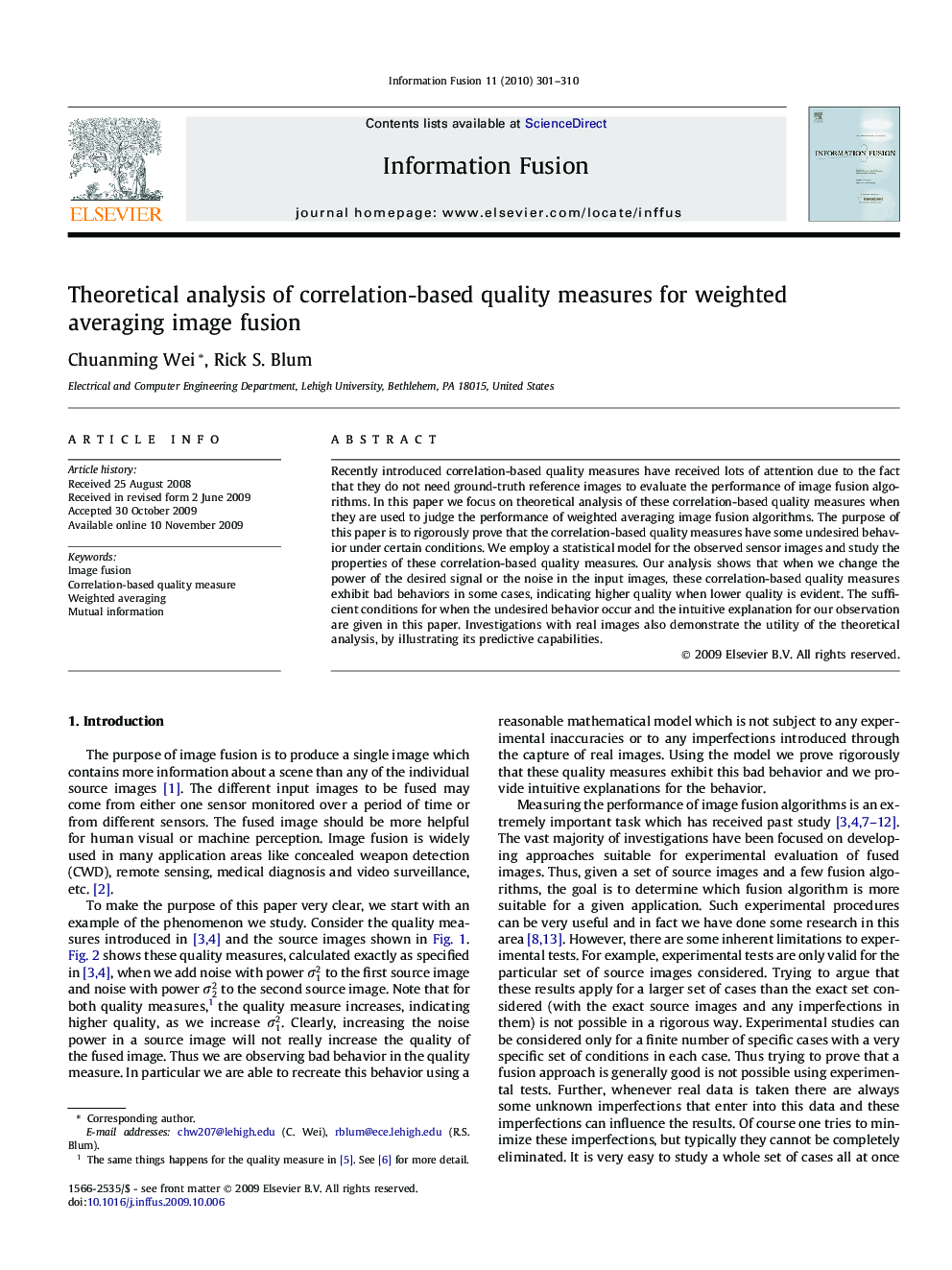| Article ID | Journal | Published Year | Pages | File Type |
|---|---|---|---|---|
| 528310 | Information Fusion | 2010 | 10 Pages |
Recently introduced correlation-based quality measures have received lots of attention due to the fact that they do not need ground-truth reference images to evaluate the performance of image fusion algorithms. In this paper we focus on theoretical analysis of these correlation-based quality measures when they are used to judge the performance of weighted averaging image fusion algorithms. The purpose of this paper is to rigorously prove that the correlation-based quality measures have some undesired behavior under certain conditions. We employ a statistical model for the observed sensor images and study the properties of these correlation-based quality measures. Our analysis shows that when we change the power of the desired signal or the noise in the input images, these correlation-based quality measures exhibit bad behaviors in some cases, indicating higher quality when lower quality is evident. The sufficient conditions for when the undesired behavior occur and the intuitive explanation for our observation are given in this paper. Investigations with real images also demonstrate the utility of the theoretical analysis, by illustrating its predictive capabilities.
